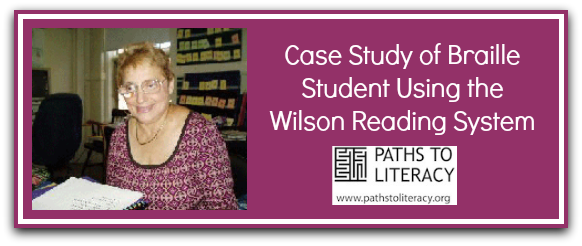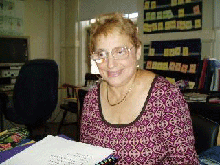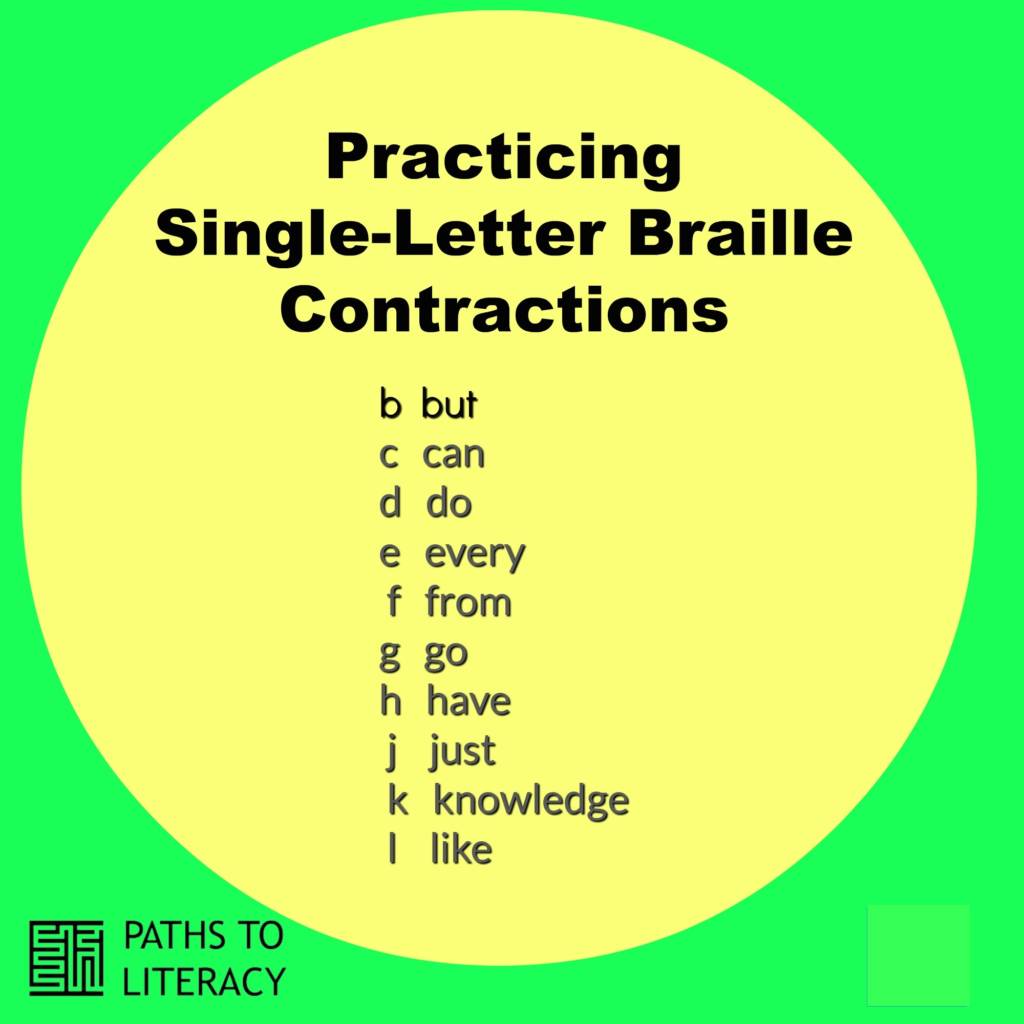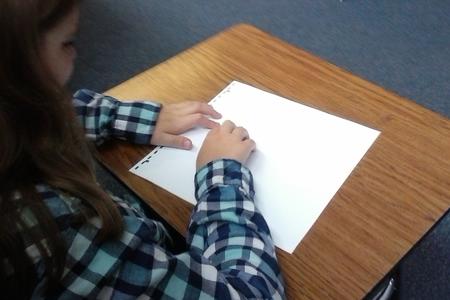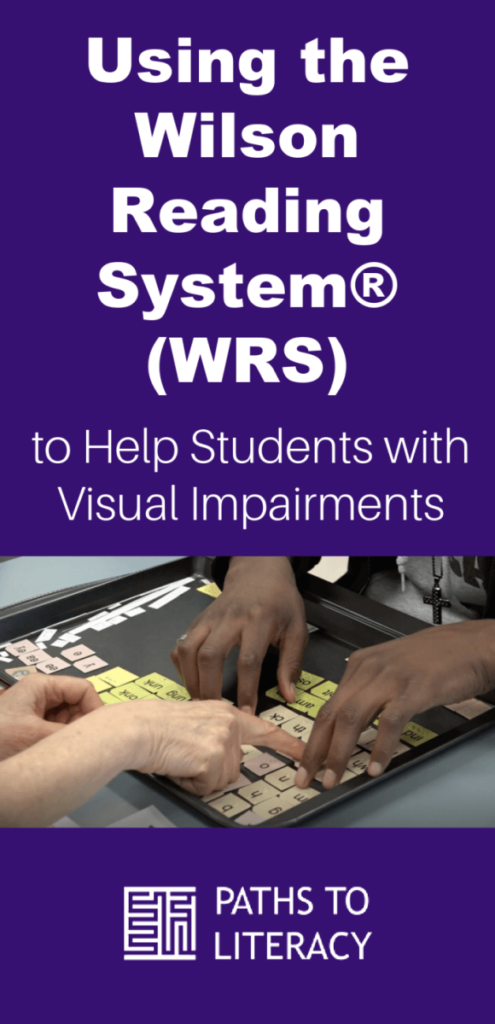Stephen’s Story
An Interview with Roz Rowley, Perkins School for the Blind
In September of 2001, Stephen, a bright nineteen-year-old student with a history of failed attempts to learn to read braille, stepped into the classroom of Perkins teacher Roz Rowley. In fact, before coming to Perkins he had been advised not to bother to pursue studying academics at all.
The challenge of teaching a student to read when he couldn’t master the sounds that form words
“As soon as I started to teach Stephen, I could tell that he had given up on learning to read,” said Rowley. “Not only did Stephen have great difficulty learning the letters and contractions, he also had poor phonemic awareness – he could not master the sounds that form words, the very foundation of literacy. I needed to find a different way to teach this information to him, and that’s what I intended to do.” She talked with a friend who worked with middle-school learning disabled students and asked her if she had come across anything new for a student grappling with remembering sounds. “Laurie came to my classroom a few weeks later and started dumping out books all over the floor. I sat down and got to work.”
Introducing the Wilson Reading System
What Roz discovered that day was the Wilson Reading System, a carefully organized twelve step multi-sensory program. The system begins with a student learning the sounds or phonemes, such as the “t” found in tip or cat. Once students have mastered these sounds, they begin to experiment with putting them together. They then move from sounds to words to sentences and finally entire passages. Wilson program provides students with sound cards and syllable cards, Student Readers and other materials that encourage them to become physically involved in their lessons and repeated successful practice to reinforce what they are being taught. Roz took one look at this approach and knew she wanted to try it with Stephen.
With the help of Perkins staff like Judy Beltis and Kim Charlson, Rowley was able to secure the necessary funds to begin to customize the Wilson program for Stephen. Wilson instructors were brought to Perkins to train staff on how to teach literacy using this method. Once trained, Rowley took the lead in the complex task of adapting the program for the unique needs of students with visual impairment. She and other members of the staff such as Justine Rines and Mary McCarthy took the sound, syllable, and word cards and started adapting them. Since the project began, the twelve readers have been scanned into braille and are being used by Perkins teachers with their students.
Student Progress
She started using the program immediately with Stephen, and for the first time he began to read braille and sound out words. As he became more and more advanced in his studies, he moved through Steps One through Seven using the Wilson Readers. Rowley continued to motivate him by adding in age-appropriate texts to reinforce his newfound interest in reading.
Three years later, Stephen graduated as President of his class and read his graduation speech. Currently, he is attending Keene State College, and is on the Dean’s list. He and Roz still keep in touch.
Adaptation of the Wilson Reading System for Braille Users
Rowley’s adaptation of the Wilson program has been picked up by other teachers in need of alternate literacy programs. Perkins Lower School teacher Mary McCarthy is using the Wilson program and adapting it even further for younger students with new readers and objects representing sounds to further engage students.
Rowley’s adaptation of the Wilson program is so successful that the American Printing House for the Blind has agreed to produce the Wilson Reading System materials for national distribution. The first three readers and accompanying materials are going to be available in the near future.
Roz has spent her entire career thinking on her feet and adapting her teaching methods to ensure that students like Stephen succeed. “I came to Perkins right out of college, and I have never felt the need to go anywhere else. I love the kids, and I love what I do. It feels so good to know that what I teach my kids helps them become the successful adults they are today.”
